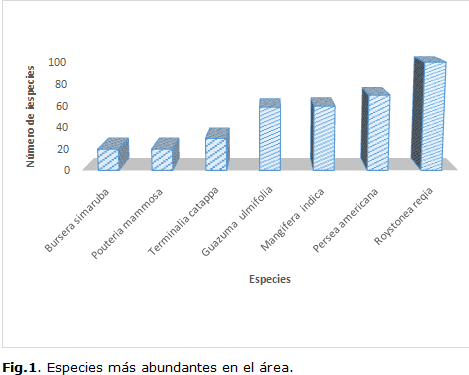Uses of arboreal species of the peasants in the valley San Andrés
Main Article Content
Abstract
Downloads
Article Details
References
BENNETT, B.C. y PRANCE, G.T. Introduced plants in the indigenous pharmacopoeia of Northern South America. Economic Botany [En línea]. 2000, Enero, 54(1). 90-102. ISSN: 0013-0001. Disponible en: http://link.springer.com/article/10.1007/BF02866603
BERMÚDEZ, A. La investigación etnobotánica sobre plantas medicinales: una revisión de sus objetivos y enfoques actuales. Interciencia [En línea]. 2005, Agosto, 30(8). 453-459. ISSN: 0378-1844. Disponible en: http://search.proquest.com/openview/1ca610e9b4a8fa6f22c391fae15e8d8e/1?pq-origsite=gscholar&cbl=21011
DE CUBA, ACADEMIA DE CIENCIAS. "E INSTITUTO CUBANO DE GEODESIA Y CARTOGRAFÍA (ICGC). Estudio de los grupos insulares y zonas litorales del archipiélago cubano con fines turísticos. La Palma, Viñales y San Andrés. Instituto de Ecología y Sistemática. Editorial Científico-Técnica.
ESCOBAR, B. G. (2002). Introducción al paradigma de la etnobiología [En línea]. Ciudad Virtual de Antropología y Arqueología, 2002. Disponible en: http://www.naya.org.ar/congreso2002/ponencias/german_escobar_beron.htm
MARTIN, G. Etnobotánica: Manual de métodos. Montevideo, Uruguay: Norda-Comunidad, 2001.
PANEQUE, I .T. Influencia de la especie Syzygium jambos D.C, pomarrosa, en la composición florística y en la calidad de las aguas, de la parte superior de la cuenca del río "San Diego". Pinar del Río, Cuba", 2008.
PELUSO, M. D. y ALEXAIDES, M. N. Urban Ethnogenesis begins at home: the making of self and place amidst Amazoni’s Environmental Economy. Traditional Dwellings and Settlements Review [En línea]. 2005, 16(2).1-10. ISSN: 1050-2092. Disponible en: http://s3.amazonaws.com/academia.edu.documents/35074538/Peluso___Alexiades_2005_-_Indigenous_Urbanisation_TDSR.pdf?AWSAccessKeyId=AKIAIWOWYYGZ2Y53UL3A&Expires=1489500428&Signature=haQ%2F9qUgZd%2FMT3teQawVhFi8Ji8%3D&response-content-disposition=inline%3B%20filename%3DPeluso_D._M._and_Alexiades_M.N._2005._In.pdf


